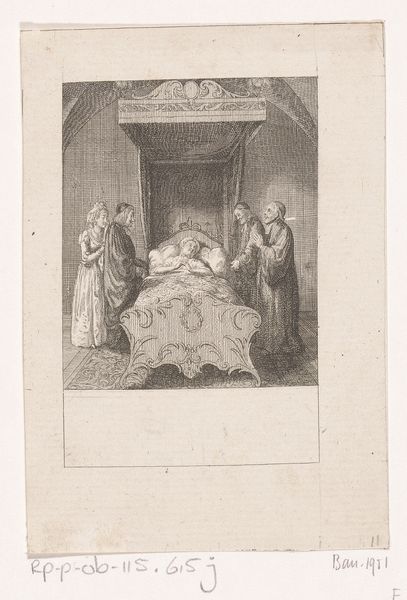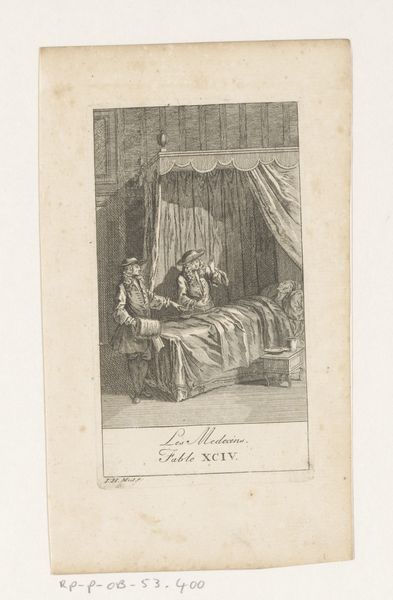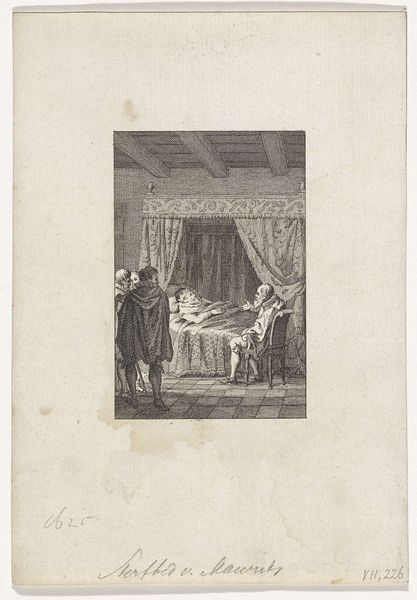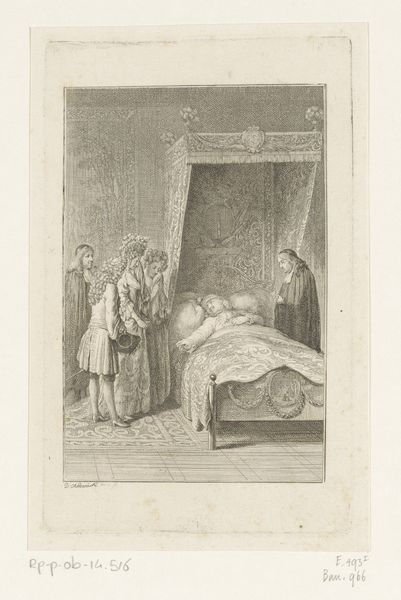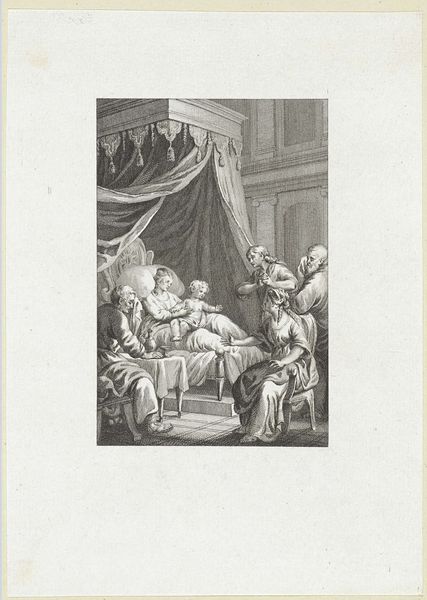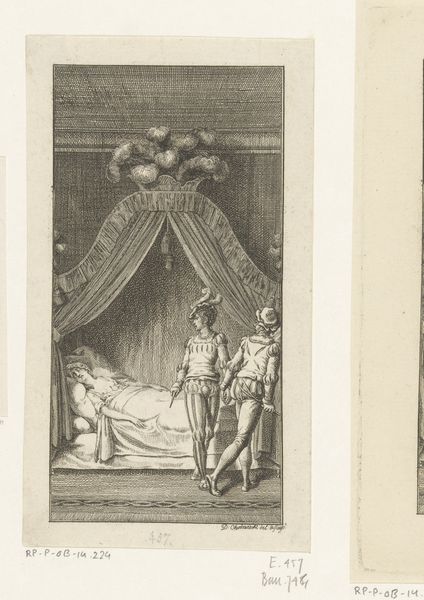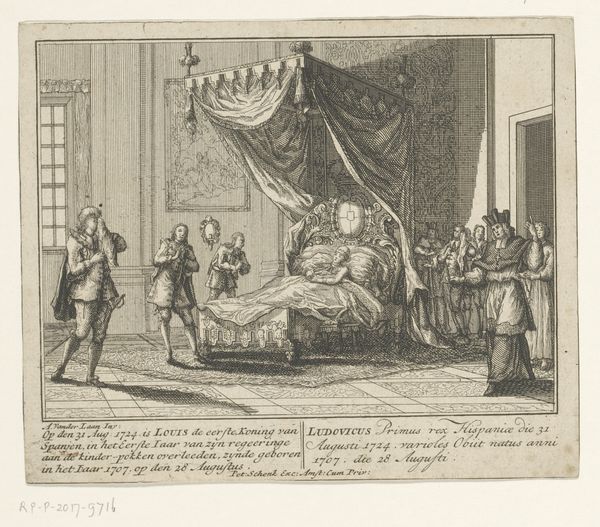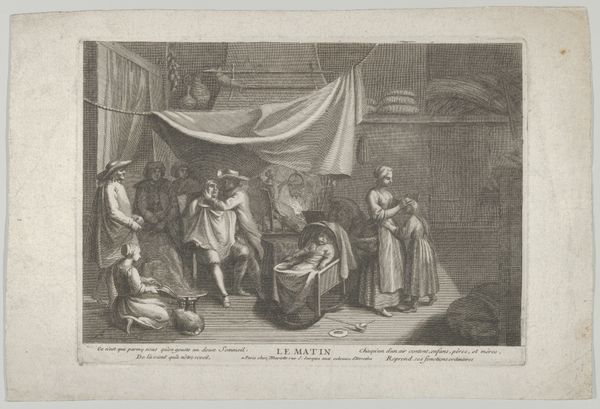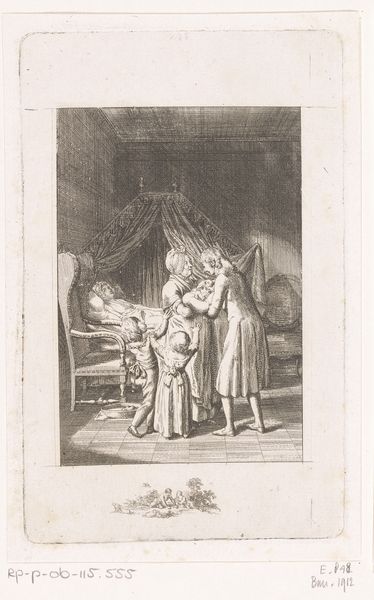
print, engraving
#
narrative-art
#
baroque
#
ink paper printed
# print
#
genre-painting
#
engraving
Dimensions: height 142 mm, width 81 mm
Copyright: Rijks Museum: Open Domain
Editor: This is "Fable of the Ploughman and his Children" created in 1758 by Johann Heinrich Meil, using engraving as the medium. The scene looks rather tense and gloomy, the etched lines create a somber mood, with everyone seemingly focused on the bedridden figure. What structural elements do you notice first, how does it guide the eye? Curator: The artist's control of line and composition is masterful. Notice the linear perspective drawing our eyes from the foreground figures to the depth of the room. The artist employs cross-hatching to create volume and shadow, particularly noticeable in the drapery and the figures’ clothing, enriching the contrasts that give definition to forms. The placement of the bed in the foreground creates a central focal point. Consider how this organization impacts our perception of the narrative. Editor: The way the figures are arranged certainly tells a story without words, but the print seems simple and straightforward. Am I missing something deeper beyond the story depicted? Curator: Not at all. Formal analysis invites a more contemplative engagement with the artwork's structure. Consider the contrasting emotions displayed by the characters – grief, concern, perhaps even suspicion. These emotive responses are rendered through subtle variations in posture and expression. Moreover, consider how the visual weight is distributed. The concentration of figures on the right, balanced by the bed on the left. Do you feel these counterbalance each other? Editor: I do now. This print uses lines and forms to evoke emotion, revealing narrative not immediately apparent. Seeing how formal elements contribute meaning makes me view the work more deliberately. Curator: Indeed, every line and shade is intentional. Such structural awareness provides richer, thoughtful perspectives.
Comments
No comments
Be the first to comment and join the conversation on the ultimate creative platform.
